From the early days of print advertising, all the way to today’s social media, there have been a few primary rules that have never really changed.
One of these golden rules is: CUTE SELLS. Babies, puppies, kittens—they’re all consistently advertising gold. Just place your product next to a baby with a bow, or a basket full of adorable kittens, and it practically sells itself
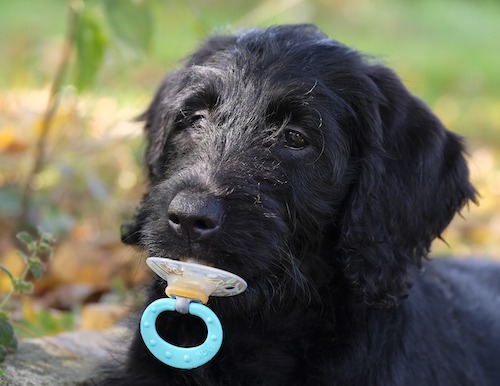
For several decades, babies were all the rage. If an advertiser’s brand was positioned alongside a smiling newborn baby, it most-always increased its likability. It made the imagery more lovable and relatable — especially in reaching out to the key family-friendly demographic called “moms and dads.” How could it not? It’s a beautiful smiling baby, right?
Well, this strategy was so tried and true that nearly every company and their advertising agency wanted to associate their brand with a sweet little baby. These products included the obvious: toys, cereal, shoes, clothes, soaps, etc. But they also included alcohol, razors, drugs, tobacco, and even guns.
As outrageous and inexcusable as these ads were by today’s standards, it used to be totally acceptable to use child imagery with a wide array of dangerous products and in potentially deadly situations. Fortunately, that’s no longer the case. By the mid-20th century, the culmination of the outcry from those demanding more responsible imagery in advertising, fears of liability litigation, along with a “newly-found moral conscience” by creative agencies and publishers, using the imagery of babies and small children placed in highly-irresponsible situations thankfully has become (largely) a thing of the past.
Today, these vintage ads are internet fodder, filling up the “Can you believe these were real?!” files.
So, do you think any reputable brand, advertiser or creative agency would use children in similar ways today? Of course not. But MANY unfortunately continue to use and depict other important family members — cats and dogs — in equally dangerous and life-threatening situations. And, to a growing number of pet-owning consumers, pet safety advocates, and veterinary experts, it’s now time to look at these ads much in the same way we look at those baby ads from a century ago.
It might be easy for each of you to dismiss the concept of assuring that pets are depicted in situations that are safe from danger as just being overly “politically correct,” or being a buzzkill of fun. After all, “They’re just pictures.” right? “They’re just there to get the attention of the reader.” Well, try thinking of it from this point of view. If your business is pet-related, such as a pet sitter, grooming shop, manufacturer of pet foods, treats, toys, or if you are a provider of pet insurance, or represent a veterinary practice or association —then shouldn’t each and every impression you make better position you as an authority and an advocate on what is best for pets?
Shouldn’t your words and the images you choose in communicating with consumers and your clients be held to an even higher standard in promoting safe and responsible pet ownership? Your customers, clients, and business and promotional partners are looking to your lead in promoting the safest environment for the well-being of pets.
Even if your business isn't directly "pet-related," odds are good that your customers have pets in their home. And odds are also good that they consider those pets an important part of their family. So wouldn't it be nice to be positioned as a brand/product that cares about the whole family?
Today, as pet owners are growing in sophistication about the lives and the care of their pets, and as more and more people are referring to themselves as “pet parents,” marketing to the family/pet-owning demographic needs to be done in a responsible manner. And one of the first things that can be improved upon in communication with consumers is the pet imagery used in advertisements, brochures, flyers, posters, and social media outreach.
Those who work in veterinary hospitals too often see the pain and suffering of animals from preventable accidents.
When we see advertising and marketing materials depicting the exact scenarios that bring the animals (and their owners) in, we just cringe at the thought of promoting or sharing such negligent activity.
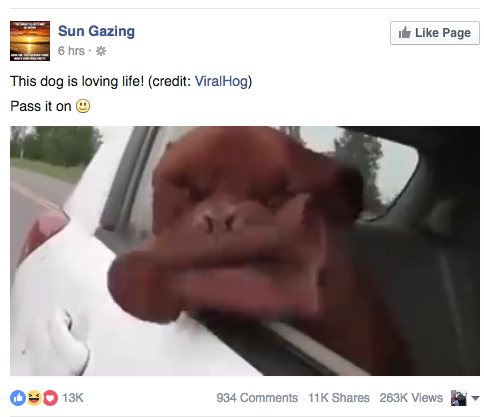
Just as it is highly reprehensible to show a baby wrapped in cellophane, it’s equally as irresponsible and dangerous to show a dog with its head inside a bag of chips.
Suffocation can happen in as little as 3–5 minutes and it happens to pets weekly.
We get it, CUTE SELLS! But it needn't do so by entrenching and normalizing unsafe activities or scenarios that put pet lives at risk — just as it needn't have done so while putting the lives of babies at risk in days past.
We must be vigilant in our responsibility to portray pets and their owners in a positive and healthy environment. When those in our industry continue to use imagery that’s counter to a safe environment, it eventually leads to an unfortunate normality. It becomes the status quo. And that’s why it needs to change.
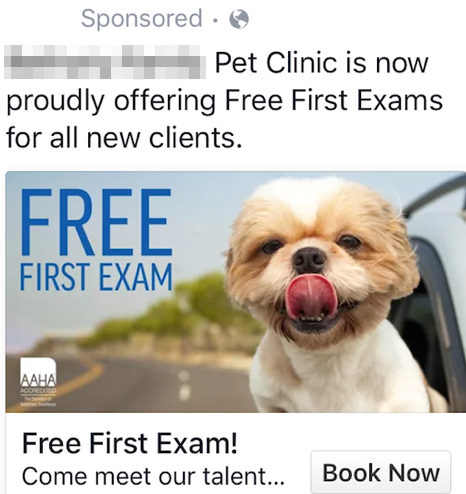
For years, there was little to no thought of putting a safety helmet on a child riding a bicycle or skateboard. But today you would be shocked to see a television or print ad with children riding without a helmet. Safety became the norm. Helmets became the status quo. And people’s lives have been saved as a result.
We need to play a similar role and be responsible for shifting perceptions when it comes to pets. “Common sense” requires that the vast majority of a population is aware of something. In the case of pet dangers, not everyone is aware of pet suffocation or the severe and common injuries inflicted by playing with sticks, for example. Using more responsible imagery to connect and engage with your pet-loving audience can go a long way toward influencing and changing behaviors for the better — improving safety and 'norms,' and helping to protect pets everywhere.
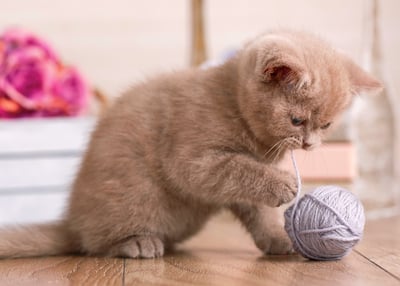
Yarn, thread, string, dental floss, and other “linear” objects pose a very real and serious hazard for pets – especially cats, who often unintentionally ingest (swallow) such objects during their eager play.
The additional danger of these types of “foreign body ingestions” is that when one end of the linear object gets caught (usually around the base of the tongue, or at the connection of the stomach and the intestines), it acts as an anchor while the digestive tract attempts to move the rest of the length along through the intestines.
This combination of movement with one end being “anchored” results in a sawing action that damages and eventually “saws through” the intestines, causing a painful and potentially fatal spillage of digestive contents into the abdominal cavity. Linear foreign body obstructions typically require surgery to relieve the problem and save the cat's life.
This looks like a cute puppy out having a ball while chasing a stick, right? Well, ask any one of the (large) number of dog owners who have watched in horror as their dog suffered severe and painful injury, or even death, as a result of exuberantly jumping or running onto the sharp end of a stick that has landed at the wrong orientation after being thrown by that very same owner!
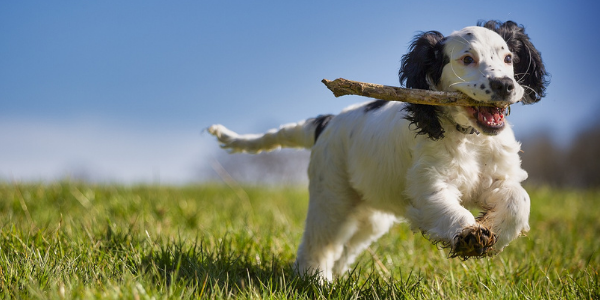
Each day in animal hospitals and ERs all across the country, dogs are brought in suffering from a variety of stick-play injuries. From splinters in their mouth and broken teeth, to impalements and puncture wounds to their eyes, throat, lungs, heart, and a variety of other organs! Use an image of a dog chasing, running, or even chewing on a stick and not only will you perpetuate and normalize a dangerous behavior, but you’ll also quickly alienate a large group of dog lovers who have either had a dog injured or killed by a stick, or know someone who has.
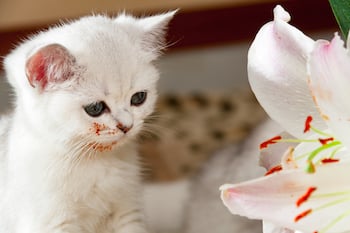
Though beautiful and common in bouquets, lilies are extremely dangerous for cats to even be around, let alone to sniff and/or nibble on. Unfortunately nobody knows exactly what the toxin is in lilies that can cause devastating acute kidney failure in cats. What we do know is that it’s in every part of the plant and flower of true lilies, from the stem and leaves, to the petals and pollen. It’s even in the vase water!!!
Many dogs will eat just about anything — literally! And that literally even includes baby's pacifiers ... sometimes even as many as 19!
In the vast majority of these cases, surgery (or endoscopy) is necessary to recover these objects and return the offending dog to good health. Not only can having your dog need surgery be distressing for the pet owner, it can also be quite expensive for them, too.
If you’re putting anything together (email, website, advertising, PSA, poster, brochure, Instagram campaign, Facebook post, video, etc.) the guidelines below can help your internal marketing and creative teams, as well as any of your external vendors. It can also help steer your social media team members who post and tweet pet images to your followers. All those who have a hand in delivering your company’s message can benefit from these basic guidelines that can go a long way in furthering your brand as — not just a leader in the health, happiness and welfare of dogs and cats — but as a leading advocate in fostering responsible pet ownership, too. Together, we can help influence the behavior of pet owners, and make positive changes in the health and wellbeing of pets. After all, isn’t influencing and changing behavior one of the underlying (if not primary) goals of marketing?
Assessing imagery isn’t always cut and dry, and it sometimes might seem that a medical degree is required to properly assess the potential risks depicted in a particular photo. But most times it just takes a keen and vigilant eye. When in doubt, search for another image — there are many to choose from — or seek outside expertise.
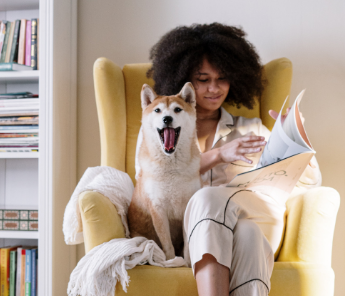

1. Does the image depict a preventable “accident waiting to happen” scenario?
A dog peering over a BBQ at some hot dogs, pets riding unrestrained in the car, a cat on a balcony of a high-rise, a pet with Christmas lights wrapped around it, a cat near a lit candle or pumpkin, a dog being fed a piece of pizza or their owner’s T-Bone steak leftovers are but a few examples. If you can foresee “an accident waiting to happen,” or a visit to the vet's office it is best to reject that image.
2. Does the image contain “archaic,” less-humane, or unsafe training tools?
This one may seem obvious, but we have seen a variety of images presented by leading brands that show dogs in choke chains, prong/pinch collars, and even electric shock collars. These devices can pose avoidable risks of injury, are painful, and can actually be counter-productive in many cases. Also, several of these “tools” have even been outlawed in certain places. You should not want your brand (or your client’s brand) associated with them. Even retractable leashes, which are commonplace, yet actually provide poor control for overly exuberant puppies and dogs, have caused serious injuries to both people and animals.
3. Does the image depict fear, discomfort, or distress for the pet?
Is the pet’s “personal space” bubble being compromised? Is a child hanging on their neck or riding on their back? While these pictures may look cute, they also frequently show clear signs of distress and anxiety or discomfort on the part of the pet. These are scenarios where “out-of-nowhere” bites and scratches occur. Photos of pets cowering or hiding can be signs of fear or pain, so even though the pet is adorable, these are not good image choices, unless the subject matter associated with it matches, like “Is Your Cat In Pain?”
As dangerous images continue to proliferate our industry’s marketing and social channels — let alone the marketing and social posts in non-pet-related industries (food, automotive, entertainment sites, etc.) — it’s time to step-up and change that. We are the advocates for healthy pets, and we are collectively responsible for helping improve the status quo standards on pet ownership, pet fun, and pet safety. Omitting images that glorify and make light of the situations that endanger animals — the same way the marketers of the past stopped using babies to promote and sell tobacco, razors, and guns — is a great place to start.
